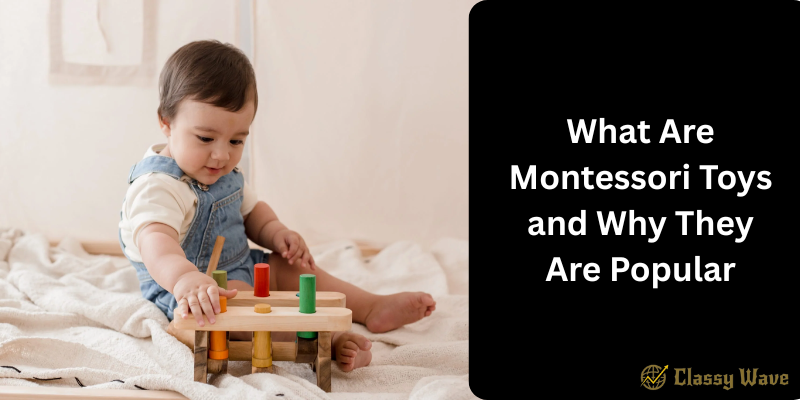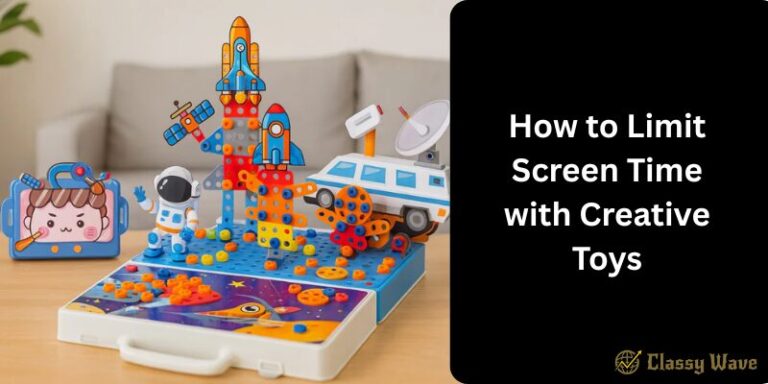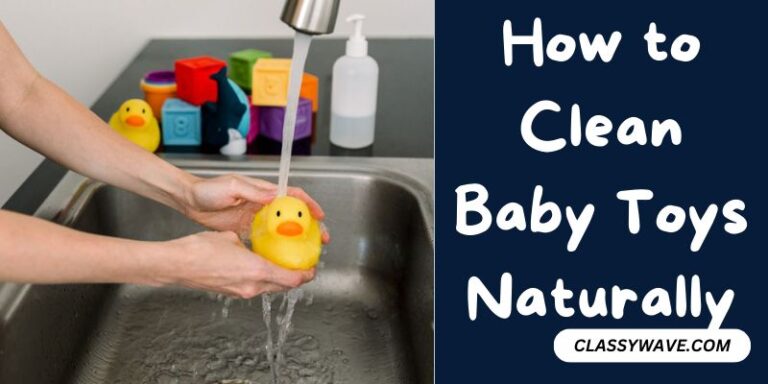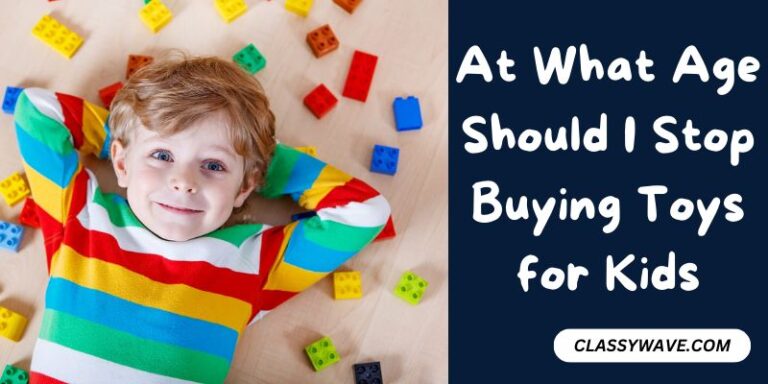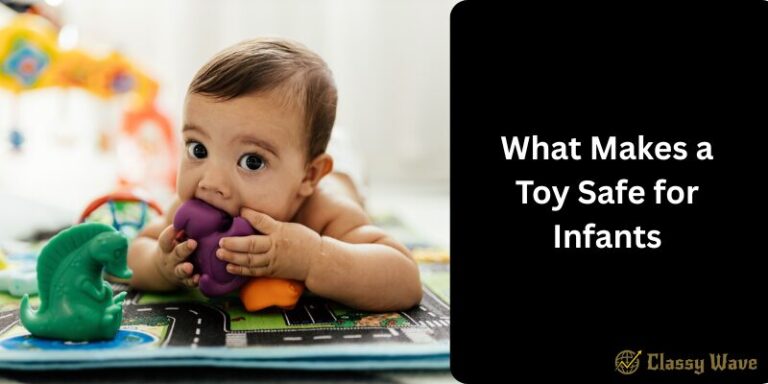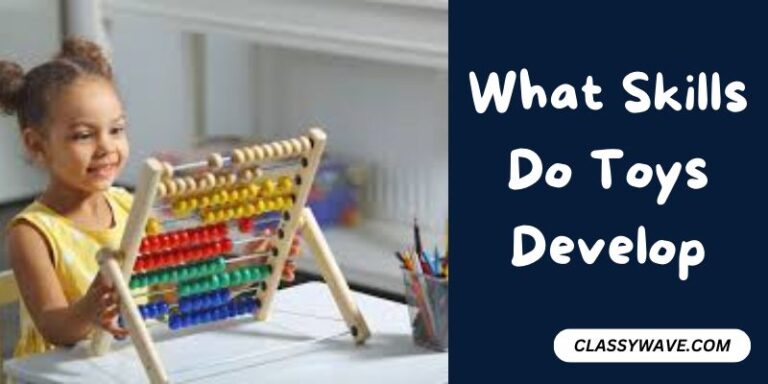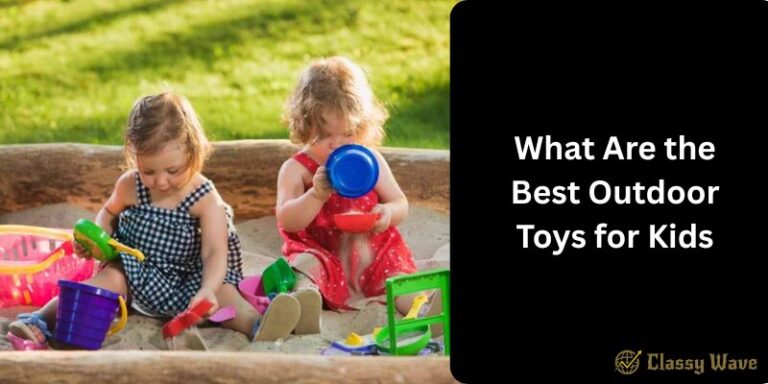What Are Montessori Toys and Why They Are Popular | Classy Wave
If you’ve been searching for educational toys for your child, you’ve probably come across the term “Montessori toys.” These toys are designed with a purpose—to help children learn through hands-on exploration, creativity, and independence. Unlike flashy, battery-operated toys, Montessori toys encourage real-world learning and skill development. But what exactly are Montessori toys, and why are they becoming so popular among parents and educators worldwide? Let’s dive in!
What Are Montessori Toys?
Montessori toys are play materials inspired by the Montessori method, an educational approach developed by Dr. Maria Montessori in the early 1900s. The goal is simple: to help children learn naturally through play, discovery, and self-direction.
These toys are often made from natural materials like wood, metal, or fabric and focus on one skill or concept at a time. For example, a wooden stacking toy teaches hand-eye coordination, balance, and size recognition—all without lights or sounds.
In short, Montessori toys promote active learning rather than passive entertainment.
Key Features of Montessori Toys
Montessori toys are designed differently from traditional toys. Here’s what sets them apart:
1. Simplicity
Montessori toys are minimalistic and free from unnecessary distractions like bright lights or loud sounds. The simplicity allows children to focus on the activity itself.
2. Natural Materials
Most Montessori toys are made of wood, metal, or fabric. These materials provide a natural sensory experience, helping children connect with textures, weights, and temperatures.
3. Real-Life Connection
Montessori toys mimic real-life objects—think mini kitchen sets, cleaning tools, or gardening kits—helping children understand everyday life through play.
4. Focused Learning
Each toy targets a specific developmental skill such as motor coordination, problem-solving, or sensory perception.
5. Open-Ended Play
Many Montessori toys have no fixed outcome, allowing children to use their creativity and imagination while exploring different possibilities.
The Montessori Philosophy Behind the Toys
The Montessori philosophy revolves around “learning by doing.” Instead of memorizing or being instructed, children are encouraged to explore, make mistakes, and learn at their own pace. The toys serve as tools that support this independence.
For example, instead of pressing buttons on a musical toy, a Montessori child might explore a real xylophone or drum—learning how sound is created through action and cause.
Examples of Montessori Toys
Here are some classic examples of Montessori-inspired toys:
- Wooden stacking rings – Develops fine motor skills and size recognition
- Shape sorters – Encourages problem-solving
- Counting beads – Introduces early math concepts
- Practical life kits – Child-sized broom, dustpan, or watering can
- Montessori busy boards – Helps children practice daily tasks like zipping, buttoning, and tying
Each of these toys supports both independence and curiosity in a natural, engaging way.
Why Montessori Toys Are Popular
Montessori toys have become increasingly popular, and for good reason. Let’s look at why so many parents are choosing them over traditional toys.
1. They Encourage Independent Play
Montessori toys empower children to play and explore on their own. This builds confidence and helps them develop problem-solving skills from an early age.
2. They Support Cognitive Development
Through hands-on play, children learn key concepts like cause and effect, balance, counting, and pattern recognition naturally—without pressure or rote learning.
3. They Reduce Screen Time
In a digital world, Montessori toys offer a screen-free alternative that stimulates the mind and body through real interaction, not virtual entertainment.
4. They Are Eco-Friendly
Because most Montessori toys are made from wood and other natural materials, they’re sustainable and durable—making them both child-safe and environmentally friendly.
5. They Grow With the Child
Many Montessori toys are designed to be used in multiple ways. A simple set of wooden blocks, for example, can be used for stacking by toddlers and for building structures by older kids.
The Benefits of Montessori Toys for Children
Promotes Concentration
Montessori toys are designed to keep children engaged without overwhelming them. Over time, this improves focus and attention span.
Develops Fine Motor Skills
Activities like threading, stacking, or sorting strengthen hand-eye coordination and dexterity.
Boosts Creativity
With no fixed rules, Montessori toys let children use their imagination to invent new ways to play and learn.
Builds Confidence and Independence
When children successfully complete a task on their own, they develop self-reliance and confidence in their abilities.
Encourages Mindful Play
Montessori play is calm and purposeful, encouraging children to be present and aware of what they’re doing—rather than overstimulated by flashing lights or sounds.
Montessori Toys by Age Group
To get the most benefit, it’s important to choose Montessori toys suited to your child’s age and development level.
For Infants (0–1 year)
- Soft rattles
- Grasping toys
- Simple mobiles
For Toddlers (1–3 years)
- Wooden puzzles
- Shape sorters
- Stacking toys
- Practical life tools (mini brooms, cups, or pitchers)
For Preschoolers (3–5 years)
- Counting beads
- Threading activities
- Building blocks
- Matching cards
Each stage supports the child’s growing curiosity, coordination, and independence.
How to Choose the Right Montessori Toy
When selecting Montessori toys, keep these points in mind:
- Choose natural materials over plastic.
- Pick simple designs that focus on one skill.
- Make sure the toy encourages hands-on learning.
- Avoid toys that do the work for the child (like battery-operated gadgets).
Quality and purpose matter more than quantity when it comes to Montessori play.
The Role of Parents in Montessori Play
Parents play a vital role in Montessori-style learning. Instead of directing the child, they act as guides—observing, encouraging, and allowing independent discovery. Provide a safe space, demonstrate how to use a toy, and then step back to let your child explore.
Conclusion
Montessori toys are more than just beautiful wooden playthings—they are educational tools that nurture creativity, independence, and cognitive development. Their popularity continues to grow because they align with what every parent wants: meaningful play that helps their child grow naturally and confidently. By choosing Montessori toys, you’re not just giving your child something to play with—you’re giving them a lifelong foundation for learning.

